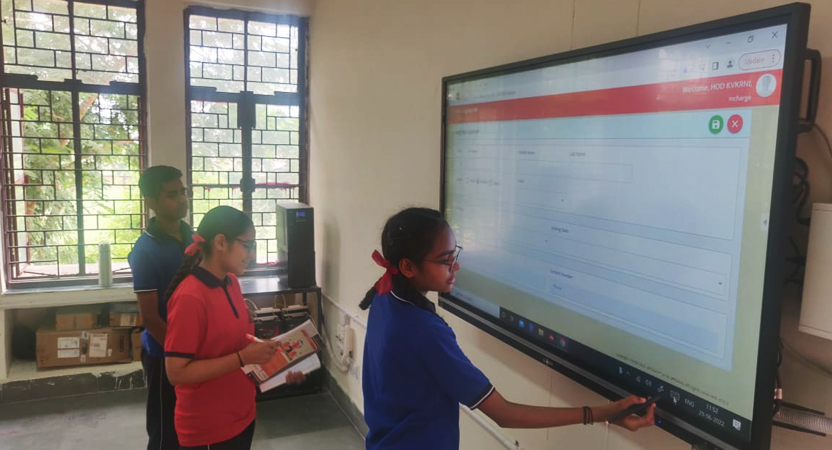The Evolving Classroom: Technology Transforming Education
As we navigate the rapidly changing landscape of education, technology has emerged as a powerful
catalyst, revolutionizing the way students learn and teachers approach the classroom. This document
delves into the remarkable advantages of technology-enabled classrooms, highlighting how they are
enhancing clarity, comprehension, and the overall learning experience for students.
Advantages Of Technology-Enabled Classrooms
The integration of technology into the classroom has brought about a profound shift in the educational landscape. By harnessing the power of digital tools and resources, teachers can now create dynamic, engaging, and personalized learning experiences that cater to the diverse needs of students. From interactive whiteboards and virtual simulations to online collaboration platforms, the technology-enabled classroom has become a hub of innovation, empowering both teachers and students to explore new frontiers of learning.
Improved Clarity and Comprehension of Topics
One of the standout advantages of technology-enabled classrooms is the enhanced clarity and comprehension of complex topics. With the aid of multimedia content, such as high-quality videos, animations, and interactive visualizations, students can better grasp abstract concepts and deepen their understanding. This immersive approach helps to bridge the gap between theoretical knowledge and practical application, enabling students to connect the dots more effectively and retain information more readily.
Multimedia Content for Enhanced Learning
The integration of multimedia content in technology-enabled classrooms has transformed the learning experience. Engaging visual aids, dynamic presentations, and interactive simulations not only capture the attention of students but also cater to different learning styles. This multisensory approach enhances information retention, making complex topics more accessible and engaging. By harnessing the power of multimedia, educators can create lessons that are both informative and captivating, fostering a deeper level of understanding and inspiration among their students.
Personalized Learning Experiences
Technology-enabled classrooms also pave the way for personalized learning experiences, where students can progress at their own pace and receive tailored support. Digital learning platforms and adaptive software can analyze individual performance, identify strengths and weaknesses, and provide targeted interventions and resources. This personalized approach empowers students to take ownership of their learning, enabling them to overcome challenges and excel at their own unique pace. By catering to the diverse needs and learning preferences of each student, technology-enabled classrooms foster a more inclusive and enriching educational environment.
Collaborative Learning Opportunities
Technology-enabled classrooms also facilitate seamless collaboration among students, breaking down traditional barriers and encouraging a more interactive and engaged learning process. Online discussion forums, shared digital workspaces, and video conferencing tools enable students to connect with their peers, share ideas, and work together on projects, regardless of their physical location. This collaborative approach fosters critical thinking, problem-solving, and communication skills – essential skills for thriving in the 21st-century workforce.
Bridging the Gap: Remote and In- Person Education
The COVID-19 pandemic has further highlighted the importance of technology-enabled classrooms, as they have become a crucial bridge between remote and in-person education. By leveraging digital tools and platforms, educators can now seamlessly deliver lessons, facilitate discussions, and maintain a sense of community, even when students are physically distant. This integration of technology has not only ensured the continuity of education during challenging times but has also laid the foundation for a more flexible and inclusive learning environment, where students can access high-quality education regardless of their location.
Conclusion: The Future of Technology in Education
As we look to the future, the transformative power of technology in education is undeniable. Technology-enabled classrooms have ushered in a new era of learning, one characterized by increased clarity, enhanced multimedia experiences, personalized pathways, and collaborative opportunities. By embracing these advancements, educators can empower students to become independent, curious, and adaptable learners, well-equipped to navigate the challenges and opportunities of the 21st century. The future of education is undoubtedly technology-driven, and the potential for continued innovation and progress is truly exciting.




